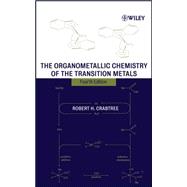
| Preface | ix | ||||
| List of Abbreviations | xi | ||||
|
1 | (28) | |||
|
2 | (4) | |||
|
6 | (2) | |||
|
8 | (1) | |||
|
9 | (5) | |||
|
14 | (1) | |||
|
15 | (4) | |||
|
19 | (2) | |||
|
21 | (8) | |||
|
29 | (24) | |||
|
30 | (5) | |||
|
35 | (2) | |||
|
37 | (2) | |||
|
39 | (2) | |||
|
41 | (4) | |||
|
45 | (2) | |||
|
47 | (2) | |||
|
49 | (4) | |||
|
53 | (34) | |||
|
53 | (15) | |||
|
68 | (4) | |||
|
72 | (3) | |||
|
75 | (4) | |||
|
79 | (8) | |||
|
87 | (38) | |||
|
87 | (12) | |||
|
99 | (5) | |||
|
104 | (5) | |||
|
109 | (3) | |||
|
112 | (3) | |||
|
115 | (3) | |||
|
118 | (7) | |||
|
125 | (34) | |||
|
125 | (6) | |||
|
131 | (5) | |||
|
136 | (4) | |||
|
140 | (8) | |||
|
148 | (4) | |||
|
152 | (2) | |||
|
154 | (5) | |||
|
159 | (24) | |||
|
162 | (3) | |||
|
165 | (1) | |||
|
166 | (3) | |||
|
169 | (1) | |||
|
170 | (6) | |||
|
176 | (1) | |||
|
177 | (6) | |||
|
183 | (24) | |||
|
185 | (6) | |||
|
191 | (6) | |||
|
197 | (2) | |||
|
199 | (8) | |||
|
207 | (28) | |||
|
210 | (3) | |||
|
213 | (8) | |||
|
221 | (1) | |||
|
222 | (4) | |||
|
226 | (2) | |||
|
228 | (1) | |||
|
229 | (6) | |||
|
235 | (40) | |||
|
239 | (2) | |||
|
241 | (13) | |||
|
254 | (3) | |||
|
257 | (4) | |||
|
261 | (2) | |||
|
263 | (3) | |||
|
266 | (9) | |||
| 10 Physical Methods in Organometallic Chemistry | 275 | (34) | |||
|
275 | (1) | |||
|
276 | (5) | |||
|
281 | (1) | |||
|
282 | (2) | |||
|
284 | (4) | |||
|
288 | (2) | |||
|
290 | (4) | |||
|
294 | (3) | |||
|
297 | (3) | |||
|
300 | (2) | |||
|
302 | (7) | |||
| 11 Metal-Ligand Multiple Bonds | 309 | (34) | |||
|
309 | (16) | |||
|
325 | (2) | |||
|
327 | (3) | |||
|
330 | (4) | |||
|
334 | (9) | |||
| 12 Applications of Organometallic Chemistry | 343 | (36) | |||
|
343 | (7) | |||
|
350 | (10) | |||
|
360 | (4) | |||
|
364 | (7) | |||
|
371 | (8) | |||
| 13 Clusters and the Metal-Metal Bond | 379 | (38) | |||
|
380 | (13) | |||
|
393 | (4) | |||
|
397 | (2) | |||
|
399 | (8) | |||
|
407 | (4) | |||
|
411 | (6) | |||
| 14 Applications to Organic Synthesis | 417 | (46) | |||
|
418 | (11) | |||
|
429 | (6) | |||
|
435 | (3) | |||
|
438 | (5) | |||
|
443 | (4) | |||
|
447 | (7) | |||
|
454 | (1) | |||
|
455 | (8) | |||
| 15 Paramagnetic, High-Oxidation-State, and High-Coordination-Number Complexes | 463 | (28) | |||
|
464 | (7) | |||
|
471 | (5) | |||
|
476 | (3) | |||
|
479 | (2) | |||
|
481 | (10) | |||
| 16 Bioorganometallic Chemistry | 491 | (30) | |||
|
492 | (5) | |||
|
497 | (6) | |||
|
503 | (6) | |||
|
509 | (8) | |||
|
517 | (4) | |||
| Useful Texts on Allied Topics | 521 | (2) | |||
| Major Reaction Types | 523 | (2) | |||
| Solutions to Problems | 525 | (14) | |||
| Index | 539 |
The New copy of this book will include any supplemental materials advertised. Please check the title of the book to determine if it should include any access cards, study guides, lab manuals, CDs, etc.
The Used, Rental and eBook copies of this book are not guaranteed to include any supplemental materials. Typically, only the book itself is included. This is true even if the title states it includes any access cards, study guides, lab manuals, CDs, etc.